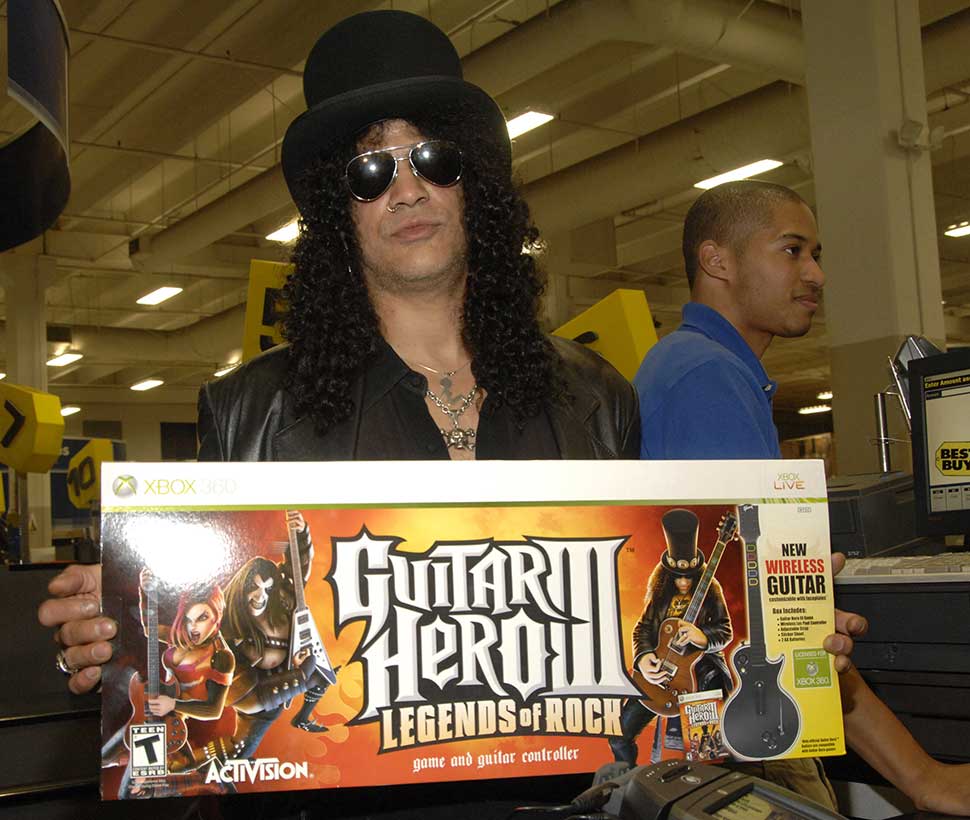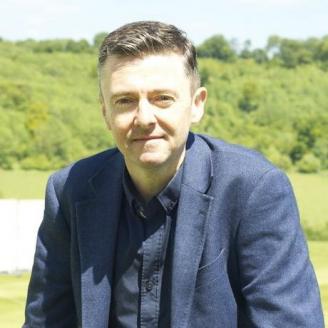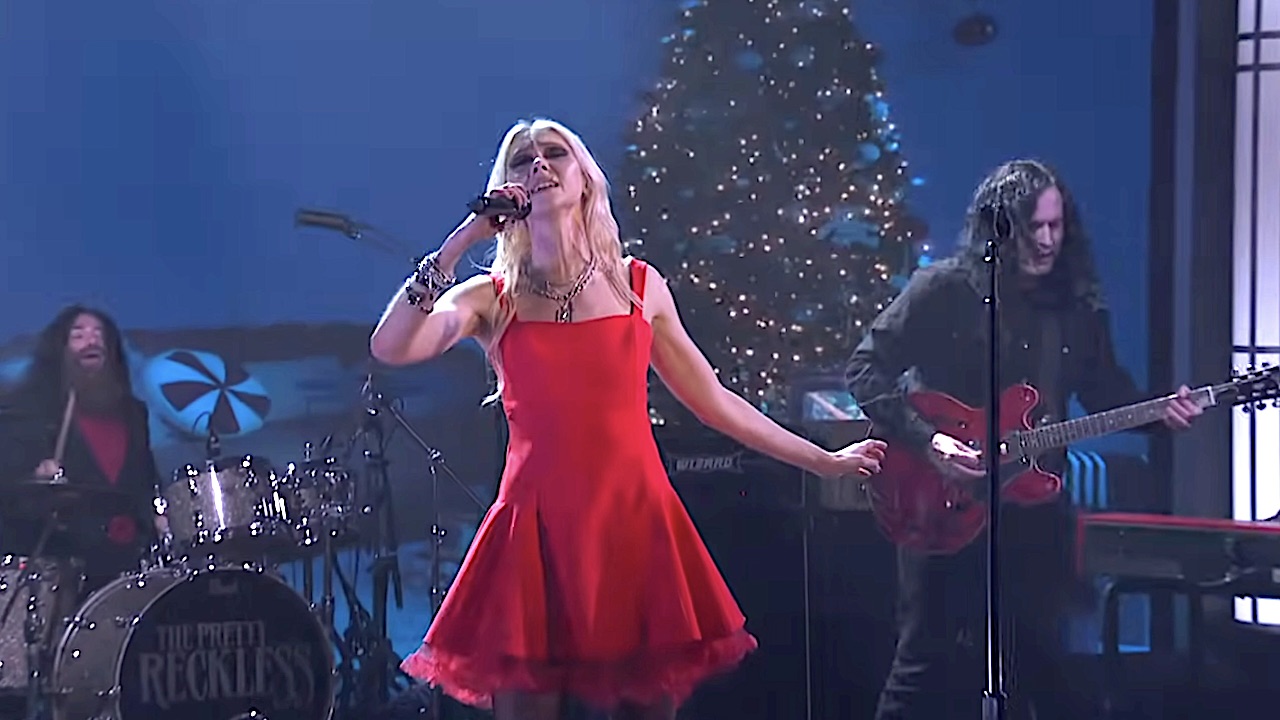How Guitar Hero III made Slash famous all over again
It's one of the biggest-grossing computer games of all time. Slash talks about how he became famous all over again through Guitar Hero III

In his book The Tipping Point, Malcolm Gladwell identified and explored “the moment of critical mass, the threshold, the boiling point,” at which something cool becomes something global, something unstoppable, a cultural touchstone.
Speak to any A&R man, any journalist, any ad exec, look in your record collection or at your pile of DVDs, watch a TV show like Dragons’ Den, and you’ll discover lots of good stuff that never reached the Tipping Point, that never went global, that remain instead small and generic pleasures.
Guitar Hero, a simple, clever computer game that distilled the essence of playing a musical instrument down to the push of a button, and that became a revenue stream so great that it suggested a new and unseen future for the flagging business of flogging records, nearly didn’t reach its Tipping Point.
It nearly didn’t tip, it nearly didn’t become the first single game in history to generate one billion dollars in revenue; it almost didn’t become the entry point for a new generation of kids to get into guitars and guitar music. That it did is one of the more remarkable success stories of the century, and at its centre is a man who hasn’t seen the inside of too many boardrooms over the years.

Guitar Hero was devised by a company called RedOctane, who had created some hardware for an arcade game named Guitar Freaks, which was a hit in Japan, and liked the idea of producing a version for home gaming. They partnered with a developer, Harmonix Music Systems, and made the first version for around $1m.
Their hunch was good: the inaugural edition of Guitar Hero, which had a metal-style logo on the box and a hand-held controller shaped like a Gibson SG – the guitar favoured by AC/DC’s Angus Young and Black Sabbath’s Tony Iommi – was a hit. It won awards, was called ‘probably the greatest rhythm game ever invented’.
RedOctane realised that the guitar-shaped peripheral was what they called ‘the magic sauce’ – the little extra ingredient that made the game special. The 47 playable songs it featured were expanded to 64 for Guitar Hero II, which became the fifth-biggest selling game of 2006.
Sign up below to get the latest from Classic Rock, plus exclusive special offers, direct to your inbox!
It was made available for both Playstation 2 and X-Box 360 platforms, the latter version coming with a Gibson Explorer-shaped controller. The key to its expansion was the arrival of big name bands like AC/DC and Aerosmith, Van Halen and Guns N’ Roses.
“We’d hit the sweet spot,” said developer John Tam. “They [the bands] understood that we’re not going to embarrass their music, we’re going to actually pay homage to their music and get it to the point where people are going to understand their music in a totally different way than they’ve ever experienced it before.”
The franchise was now worth serious money, but it still hadn’t tipped. It wasn’t a brand known to the man in the street. The game meant nothing outside of gaming circles.
Then a company called Activision bought RedOctane, paying $100m to acquire Guitar Hero. A few months later, Harmonix was purchased by MTV Networks [they would go on to develop the rival Rock Band game]. With Harmonix gone, the third edition of the Guitar Hero franchise was developed instead by Neversoft, an Activision subsidiary whose team had become so obsessed with the first editions of Guitar Hero that they spent their weekends off playing it.
While the template was set, the game still lacked the extra edge that would push it beyond its natural boundaries of hardcore gamers. Guitar Hero had real songs by real bands, but the game featured no actual rock stars, relying instead on a series of avatars created for the purpose – avatars with faux rock star names like Axel Steel and Izzy Sparks.
The company decided to address the issue for the third edition. Slash, the man who would ultimately ‘tip’ Guitar Hero into popular culture, had already encountered the game, and was at best ambiguous about its pleasures.
“I was on the Gibson tour bus with the Gibson guys for a meeting and I had my wife and kids with me,” he says now. “You know how little kids are at a meeting, so I was looking for something for them to do, and they had Guitar Hero. So I figured out how it worked and got it working for them and realised they had all this cool music that you don’t hear all the time.
"Anyway, the Gibson people realised that I was sort of like intrigued by this game so they sent me one to my house. I have a little office at the back of the house with a TV set in it, and I hooked it up. I got obsessed with the fucking game! I had to beat the game.
"I think I spent the better part of a week in that room, not taking calls, missing out on dinner. That was on ‘medium’. Next I started on ‘expert’. I started going through that – same fucking songs over and over only a lot faster. I was about halfway through, and I thought, you know what? This is embarrassing. So I unplugged it and put it in the closet. About a week later, Guitar Hero called and asked me if I’d be interested in working with them in developing the game.”
Slash wrangled with the idea. “I’m not a real video game guy,” he admited. “You get asked to do things a lot, and my first reaction is to ask, ‘Is this cool or not cool?’ You can’t do everything that people put in front of you because a lot of it’s lame, and I have a bad tendency to just go for whatever. But I sort of analysed it for a second and I guess what happened was, initially, I didn’t think it was all that cool, but the fact that I was so into the game itself, I was sort of won over. I went and met with them anyway.”
Even so, there was no immediate rapport between the parties. “The meeting was in one of those big boardrooms with all these executives,” said Slash, “and I think there was one guy in there who really knew who I was. Activision has all of these different levels because it’s a multi-billion dollar company and it’s made up mostly of executives.
"Apparently they didn’t really want to meet me because they didn’t know what to expect. It’s funny, actually, because five years ago I probably would have scared the shit out of them but I had it together when I went in this time. Went in sober and all that kind of stuff.”
When it came to discussing the specifics, things were woolly too, as Slash remembered. ‘They really didn’t know what they were doing when I first went in there. They had this idea of having an individual sort of representing the game. They wanted someone who was going to be the guitar hero. I think it was down to a couple of people.
"We sat and talked about it and we wanted this character in the game that was going to be me, and there would be these battles. All that was fine and dandy but I have to admit, when I signed on to do it, it was only the nerdy kid in me that made me say yes. Everything else about me said, no, don’t do it."
In The Tipping Point, Malcolm Gladwell writes: "Things can happen all at once, and little changes can make a huge difference. That’s a little bit counterintuitive. As human beings, we always expect everyday change to happen slowly and steadily, and for there to be some relationship between cause and effect.
"And when there isn’t – when a movie made on a shoestring budget ends up making hundreds of millions of dollars for example – we’re surprised. I’m saying, don’t be surprised. This is the way social epidemics work."
The little thing that made a big difference for Guitar Hero III was not the presence of Slash in the game – after all, it also features another rock star, Tom Morello of Rage Against The Machine – it was the box that the game came in. Slash’s avatar, all top hat and cool curls, was front and centre. All of a sudden, the game had a face recognisable to a demographic that extended way beyond gamers.
“I didn’t know it had come out,” Slash says. “I never saw the box. What happened was, we were doing the Velvet Revolver tour for the second record [Libertad], we were about to do a US tour and I asked them if they would be interested in supplying me with a bus, because I was taking my family out with me. I needed my own bus for that. They could paper the bus. They were like, ‘Okay, cool’.
"It showed up in Boston. I went to get something to eat, and walking back to the hotel I see this fucking huge picture of me on the side of the bus. I was like, ‘Jesus Christ, how am I supposed to travel around in that?’ That’s when I first got exposed to what the image on the box was going to be like. It was pretty overwhelming. I mean, Tom Morello’s in the game too. It was not so much being in the game; it was having my image on that fucking box."
The game hit stores in October 2007, carrying the sub-title Legends Of Rock, another subtle parent-persuader. It featured 73 songs, and was available across Playstation and Xbox platforms, and this time Wii, PC and Mac too. Activision called it “our largest product launch ever”.
It made $100m in its first week, and in the remaining months of 2007 became the year’s biggest-selling game. Activision could barely meet the Christmas demand. Six months later, when the thing had really tipped, it had sold more than eight million copies.
The by-product of all of these sales was the impact on the life of the man on the box. “I have a specific story that will sort of shine a big bright light on that fact,” said Slash. “A friend of mine who’s a producer, he’s got, I guess, a six-year-old little boy. I went over to their house, and I’d never met his little boy. I went over there, and the kid lost his mind. ‘You’re the guy from Guitar Hero’. He couldn’t get over it.
"A bit later on that night, he came over to me and went, ‘Hey, do you play real guitar too?’ I try not to pay attention to all of that going on, but the biggest change in my day-to-day existence was the acknowledgement of kids under 10 years old.”
Ironically, for a platform that has produced a new, unexpected and much-needed revenue stream for the dying business of selling music, Slash didn’t actually make much money from Guitar Hero.
“For me, personally, when I signed up to do it, that particular game really took off,” he explained. “The game wasn’t as big before that. It was a little more under the radar when they called me up. And I did it for a pretty modest amount of money. There was no offer of a royalty or anything. Now after the fact, I’m like, fuck…
“It’s definitely changed the way we look at selling records, because as the record business goes into decline, the gaming business has been selling a lot of music. That’s been an interesting development for sure. If you’re in a band, the luckiest thing you can have is a guy from Activision or from the Rock Band people come along and say, we’d like to chronicle your career. There is a lot of money in it.”

Enough money, in fact, to make it a key part of the promotional strategy of many bands. Slash’s friends in Metallica, for example, began work on the Rock Band version of their 2008 album Death Magnetic just days after they had finished recording it.
“It’s nothing like playing the guitar. I’ll be the first to tell you that,” said Slash of the game and its success. “I was off the road and wasn’t doing anything when I got exposed to Guitar Hero II. When I hung around for that week, I wasn’t jamming or anything. I got physically used to playing it. When they sent me the new one with me on it, it showed up and I didn’t take it out of the box for probably three or four months.
"My security guard was over at my house and he wanted to see how it worked. I’d been touring, I’d been playing guitar every day for however long – probably close to a year – and I took it out figuring I was probably still good at it from before. Because I’d been playing real guitar, when I plugged it in and played it, the difference was such that I could not play Guitar Hero. I would have had to have practiced. There’s nothing similar apart from the way that you hold the guitar.”
And yet, in spite of that, it has a strange and magnetic appeal to it that is reinvigorating rock music and the rock business.
“It’s a work of genius because it works,” says Slash. “When you design something you can come up with all kinds of crazy ideas, but it’s when it really hits a nerve that it becomes a sort of phenomenon. It’s done a couple of cool things. It’s opened kids’ eyes and ears to a lot of music they never would have been exposed to, great rock’n’roll stuff that’s just generations away from them. It’s been spearheading a rock revival for kids, it really has.
"The other thing is, one of the big questions I got asked when I first got hooked up with Guitar Hero was, as expected, ‘Oh, it’s just more mindless gaming. It’ll kill the guitar industry’ and all this other naysayer crap. But in the course of a pretty short amount of time, it turns out that statistically, more kids were picking up the guitar as a result of Guitar Hero.”
Not a bad legacy for an old boy in a top hat who doesn’t care much for computer games.
Jon Hotten is an English author and journalist. He is best known for the books Muscle: A Writer's Trip Through a Sport with No Boundaries and The Years of the Locust. In June 2015 he published a novel, My Life And The Beautiful Music (Cape), based on his time in LA in the late 80s reporting on the heavy metal scene. He was a contributor to Kerrang! magazine from 1987–92 and currently contributes to Classic Rock. Hotten is the author of the popular cricket blog, The Old Batsman, and since February 2013 is a frequent contributor to The Cordon cricket blog at Cricinfo. His most recent book, Bat, Ball & Field, was published in 2022.

